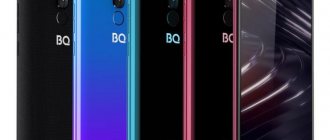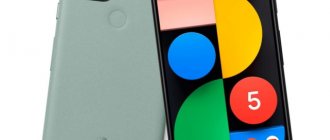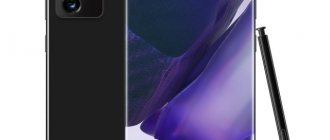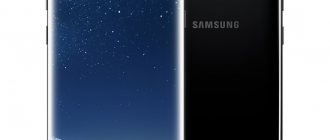First, it's worth talking about the difference between the standard 855 and 855 Plus. The second, in fact, is an upgrade of the first. The main change is the overclocked Kryo 485 CPU Prime core with a clock speed of 2.96 GHz. This contrasts with the Prime core in the standard Snapdragon 855, which clocks up to 2.84 GHz. Additionally, the performance of the Adreno 640 GPU is increased by 15 percent.
Overall, the Snapdragon 855 Plus will improve the CPU and GPU for a better gaming experience.
Apart from this, most of the chipset's specifications remain the same. The Snapdragon 855 Plus continues to feature the X24 4G LTE and X50 multi-gigabit modem. It is also better than the Snapdragon 845 thanks to its fourth-generation multi-core AI engine and Vulcan 1.1 support.
This is an incremental upgrade, and we can't say that absolutely every user should buy a Snapdragon 855 Plus phone instead of the Snapdragon 855, but the additional performance boost is always welcome. Especially for those who have phones equipped with 90Hz or 120Hz displays. Keep in mind that the Snapdragon 865 is out now, and the new processor brings a lot of improvements, including improved gaming performance.
Especially for you, we have collected the best smartphones powered by Snapdragon 855 and 855 Plus processors. Some models are available for pre-order, others are already on sale, and the rest are promised to appear in retail very soon. So let's get started.
Asus ROG Phone 2
- Display: 6.59 inches, Full HD+
- Processor: Snapdragon 855 Plus
- RAM: 12 GB
- Internal memory: 256/512 GB
- Main camera: 48 and 13 MP
- Front camera: 24 MP
- Battery capacity: 6000 mAh
- Operating system: Android 9.0 Pie
Price: from 38,300 rubles
Asus ROG Phone 2 is the first phone powered by the Snapdragon 855 Plus processor, which is one of the market leaders. The gaming model from Asus is very powerful, as it offers 12 GB of RAM (as standard), 256 or 512 GB of UFS 3.0 memory and a huge 6000 mAh battery! The device also stands out as one of the few phones to feature an OLED screen with a 120Hz refresh rate, which was quite rare at the time of release.
ROG Phone 2 has two touch trigger-like buttons, an ultra-wide rear camera - 48MP + 13MP, a 24MP selfie camera and many other accessories.
Buy
Sharp
The Japanese brand presented the Sharp Aquos R3. The 5.2-inch IGZO-matrix screen has a resolution of 3120 x 1440, supports HDR 10 and a 120 Hz refresh rate. The display has a cutout for the 16 MP front camera on the top and a fingerprint scanner on the bottom. The main camera has two modules: 12.2 and 20 megapixels. The battery capacity is 3200 mAh, there is support for 11 W wireless charging. So far, the only memory variation known is 6/128 GB.
On September 25, 2022, a presentation of the Sharp Aquos Zero 2 smartphone took place in Japan. The device is of interest with its 6.4-inch OLED display with a resolution of 2340 x 1080, a built-in fingerprint sensor and a screen refresh rate of 240 Hz (!). The processor is complemented by 8 GB of RAM and 256 GB of internal memory in UFS 3.0 format. The battery has a capacity of 3130 mAh. Features include IP68 protection, stereo speakers, an 8 MP selfie lens with Face Unlock and a dual rear camera with a resolution of 12.2 and 20.1 MP. The device weighs only 143 grams.
Samsung Galaxy Z Flip
- Display: 6.7 inches, Full HD+
- Processor: Snapdragon 855 Plus
- RAM: 8 GB
- Internal memory : 256 GB
- Main camera: 12 and 12 MP
- Front camera: 10 MP
- Battery capacity: 3300 mAh
- Operating system: Android 10
Price: from 68,090 rubles
The Samsung Galaxy Z Flip is not only one of the best phones powered by Qualcomm Snapdragon 855 Plus, but also one of the most unique devices on the market. The flexible screen takes users back to the days when flip phones were at the peak of popularity. Thanks to this design, the phone is easy to fit into any pocket: unfold it and get a modern 6.7-inch display.
This is probably the best smartphone for those who are crazy about flexible screens, as the model has more powerful specifications and a lower price than its main competitor, the Moto Razr. Yes, it's still an expensive phone, but it's incredibly cool.
Snapdragon 855 antutu
Since the first smartphone on the new chip has appeared, we can already talk about the first performance tests of the Snapdragon 855.
This result puts the new Qualcomm chip in first place in terms of performance, allowing it to overtake not only the Apple A12 and Kirin 980, released in 2022, but also the new Exynos 9820, which Samsung promised to launch in early 2022 in its flagship Galaxy S10. The performance table is as follows:
- Qualcomm Snapdragon 855 – 368480 points
- Apple A12 – 356501 points
- Samsung Exynos 9820 – 325076 points
- Hisilicon Kirin 980 - 309425 points
- Qualcomm Snapdragon 845 – 300644 points
- Samsung Exynos 9810 – 249446 points
- Apple A11 Bionic – 214878 points
- Qualcomm Snapdragon 835 – 184292 points
- Apple A10 Fusion - 181900 points
- Samsung Exynos 8895 – 174150 points
As you can see, the battle of the tops took place mainly between three manufacturers - Qualcomm, Apple and Samsung. The only Kirin that managed to break into the top ten for the first time in the last few years is the exception rather than the rule. The absence of Mediatek in this mini-rating is quite natural: back in 2016, the company announced its departure from the high-performance segment and concentration on the mid-price and budget cluster of solutions. The most powerful chip from Mediatek now is Helio P70 with an Antutu score of 156,905 points. Even the Snapdragon 821 from three years ago is ahead of it.
OnePlus 7T and 7T Pro
OnePlus 7T Specifications:
- Display: 6.55 inches, Full HD+
- Processor: Snapdragon 855 Plus
- RAM: 8 GB
- Internal memory : 128/256 GB
- Main camera : 48, 16 and 12 MP
- Front camera: 16 MP
- Battery capacity : 3800 mAh
- Operating system: Android 10
OnePlus 7T Pro Specifications:
- Display: 6.67 inches, QHD+
- Processor : Snapdragon 855 Plus
- RAM : 8 GB
- Internal memory : 256 GB
- Main camera : 48, 16 and 12 MP
- Front camera : 16 MP
- Battery capacity : 4085 mAh
- Operating system : Android 10
Price: from 33,950 rubles
The OnePlus 7T and OnePlus 7T Pro don't represent the "gaming phone" category, but they are equipped with a Snapdragon 855 Plus processor, so they have everything you need to successfully handle the most demanding games.
In addition to pure power, the models are equipped with an AMOLED display with a frequency of 90 Hz. The differences are in size and resolution: the 7T Pro has a 6.67-inch QHD+ panel, while the 7T has a 6.55-inch FHD+ screen. The refresh rate isn't as good as the ROG Phone 2, but it's better than most phones.
As for other specifications, the models are equipped with 8 GB of RAM, from 128 to 256 GB of internal memory and a battery with a capacity of 4085 mAh on the 7T Pro and 3800 mAh on the 7T. Add to all this a triple rear camera (48MP, 16MP ultra-wide-angle sensor and 12MP telephoto) and a 16MP pop-up selfie camera, and you have a couple of the best phones powered by the Snapdragon 855 Plus.
Artificial Intelligence (AI)
Snapdragon 855 is equipped with artificial intelligence with the fourth generation AI Engine.
There is no separate neuroblock here, like the Apple A12, for example. The engine operates using a CPU (processor cores), a GPU (video processor) and a Hexagon 690 coprocessor.
All this allows the engine to perform up to 7 trillion operations in one second. Note for comparison that Apple's A12 Bionic with a separate neural unit performs only 5 trillion operations per second.
The artificial intelligence of the new chipset is three times more powerful and faster than the Snapdragon 845.
Snapdragon 855 and Snapdragon 845 - the main differences
Comparison table of the main differences in the specification.
| Mobile platform | SD 855 | SD 845 |
| Cores | 1x 2.84GHz, 3x 2.42GHz, 4x 1.80GHz Kyro 485 | 4×2.8GHz Kryo 385 + 4×1.7GHz Kryo 385 |
| Architecture | 7 nm | 10 nm |
| Graphic arts | Adreno 640 | Adreno 630 |
| RAM | 4x 16-bit channel, 2133 MHz, LPDDR4x 3 MB system cache | 4x 16-bit channel, 1866 MHz, LPDDR4x 3 MB system cache |
| Modem | Snapdragon X24 LTE | Snapdragon X20 LTE |
| 5G support | There is | No |
| Camera support | up to 48 MP | up to 32 MP |
Realme X3 SuperZoom
- Display: 6.6 inches, Full HD+
- Processor : Snapdragon 855 Plus
- RAM : 8/12 GB
- Internal memory : 128/256 GB
- Main camera: 64, 8, 8 and 2 MP
- Front camera: 32 and 8 MP
- Battery capacity : 4200 mAh
- Operating system: Android 10
Price: from 34,190 rubles
2020 was not a good year for smartphones based on Snapdragon 855 Plus. Realme X3 SuperZoom is one of the few options in the market and this model has a lot to offer. In addition to the powerful processor, the device features an excellent 120Hz display, runs pure Android OS, and has an amazing quad-sensor camera that offers amazing shooting versatility. All this for a fairly attractive price.
Xiaomi Mi 9 Pro 5G
- Display: 6.39 inches, Full HD+
- Processor: Snapdragon 855 Plus
- RAM : 8/12 GB
- Internal memory : 128/256/512 GB
- Main camera: 48, 16 and 12 MP
- Front camera: 20 MP
- Battery capacity : 4000 mAh
- Operating system: Android 10
Price: from 38,000 rubles
Xiaomi Mi 9 Pro 5G is based on the Mi 9 series, but supports the latest generation of networks, is equipped with 30W wireless charging and an improved camera. RAM and internal memory are also good, but the main thing in this smartphone is 5G support and a very reasonable price. In addition, it is worth noting the beautiful design. The only problem is availability, since this particular model is difficult to find outside of China.
Vivo
The Chinese company has released a smartphone with the interesting name Vivo IQOO, designed for gamers. This did not stop the device from getting a 6.4-inch AMOLED display with a resolution of 2340 x 1080 and a U-shaped notch for a 12-megapixel front camera. At the back there is a block of three cameras, two of which have an extension of 12 and 13 megapixels, and the last one analyzes the depth of the scene. The 4000 mAh battery supports 44 W fast charging, allowing you to replenish 50% charge in 15 minutes.
iQOO Neo 855 continues to develop its line of gaming smartphones. The device offers users UFS 3.0 memory, enhanced Wi-Fi reception for a stable connection in online games, and a 4500 mAh battery. Fast charging power is 33 W. The image is displayed on a 6.39-inch AMOLED display with a U-shaped cutout for a selfie lens. RAM is 6 or 8 GB, built-in 64/128/256 GB. The smartphone is available for the Chinese market.
Vivo Nex 3
- Display: 6.89 inches, Full HD+
- Processor: Snapdragon 855 Plus
- RAM: 8 GB
- Internal memory : 128 GB
- Main camera: 64, 13 and 13 MP
- Front camera: 16 MP
- Battery capacity : 4500 mAh
- Operating system: Android 9.0 Pie
Price: from 57,000 rubles
In the case of Vivo Nex 3, it is not only the Snapdragon 855 Plus processor that stands out, as the model is equipped with a large 6.89-inch curved display and high-end specifications. Many experts have called it a reliable alternative to the Mate 30 Pro due to the strong similarities between the two smartphones. The Nex 3 has a similar design, triple rear camera setup and is also available with 5G support.
The device, like any other, has its drawbacks. The software experience leaves a lot to be desired, and photo quality can sometimes be inconsistent. But it's still a great device and one of the best Snapdragon 855 Plus phones out there.
Buy
Productivity and Gaming
The new Snapdragon assumes stronger computing capabilities, this is also implied in relation to the processors included in its architecture - Qualcomm Kryo 485 and Adreno 640 graphics. The former promises a 45 percent increase in power compared to the previous one included in the Snapdragon 845. Despite the 8-core architecture Like the Snapdragon 845, Qualcomm has really changed the architecture significantly.
There is now one “Prime Core” to maximize performance, running at 2.84 GHz, and three “Performance Cores”, each running at 2.42 GHz. The remaining four “operational cores” Efficiency Cores operate at a lower frequency of 1.8GHz. Each of the eight cores has its own L2 cache, and they all share a common L3 cache. Overall, this gives the Snapdragon 855 more flexibility to deliver maximum power when needed.
As for the Adreno 640, it has a 20 percent increase in performance compared to the GPU included in the Snapdragon 845. The new graphics core supports formats such as H.265 and VP9, hardware accelerates decoding, and, in general, the chip is 7 times faster more energy efficient than before. Qualcomm also provided support for the second generation HDR algorithm to implement the HDR10+ and Dolby Vision standards.
Potentially more important for gamers will be frequency support. Therefore, 8K 360-degree video playback mode is provided along with Volumetric VR. Adreno 640 will be able to reproduce 4K HDR on the display of the smartphone itself and up to two external 4K HDR displays connected to it.
To maximize the performance potential of the Snapdragon 855, Qualcomm launched the Snapdragon Elite Gaming platform. An effective implementation of the definition for such a thing as kinematic color grading in HDR, with support for over a billion colors and filmic tone mapping, is the Vulkan 1.1 graphics library and PBR physical rendering.
This is far from what we've previously seen on mobile devices, but it could have a huge impact on gaming in the future. Its core has been modified for animation textures and rendering. But, game developers will be able to create psychologically-based rendering, which means Hollywood-level animation can be used to calculate the characteristics of various materials such as brick, fabric, or really anything from the periodic table, and then calculate how light will interact with these surfaces.
In theory, Qualcomm says you can do it all through software, just like before. However, then calculating color reflectance, micro surface textures, reflectivity and porosity will become extremely inefficient when it comes to power consumption, with decisions made at the chip level probably not requiring 40 fps. On the contrary, the Adreno 640 has hardware support for this, and developers will be able to dive into the workflow with the same ease as they would work through the Unity 4 game engine, which also supports PBR.
ZTE Nubia Red Magic 3s
- Display: 6.65 inches, Full HD+
- Processor: Snapdragon 855 Plus
- RAM : 8/12 GB
- Internal memory : 128/256 GB
- Main camera : 48 MP
- Front camera : 16 MP
- Battery capacity: 5000 mAh
- Operating system: Android 9.0 Pie
Price: from 47,500 rubles
Nubia Red Magic 3S is a great addition to ZTE's gaming lineup. The smartphone is equipped with a Snapdragon 855 Plus processor, 8–12 GB of RAM and a 5000 mAh battery with 18-watt fast charging.
In terms of display, you get a 6.65-inch 90Hz OLED screen and triggers, making the phone great for gaming. In other words, the model provides excellent gaming performance.
Buy
OPPO
Flagships surprise less and less with their hardware, which cannot be said about original design solutions. Oppo Reno 10x Zoom Edition has become one of the most unusual smartphones of recent times. The 6.6-inch AMOLED display does not have any cutouts for the front camera. A 16 MP selfie lens with a flash is placed in a retractable block of an unusual shape, capable of automatically detecting if the phone has fallen out of hand and closing. The main camera was distinguished by the presence of a 48 MP sensor, an 8 MP ultra-wide-angle module and a 13 MP telephoto lens. The latter provides a hybrid 10x image zoom due to its unusual design.
Other bells and whistles include support for Dolby Atmos AC-4 and Hi-Res Audio, a 4065 mAh battery that interacts with VOOC 3.0 fast charging, and three microphones. This giant (9.3 mm thick and 210 grams of weight) is sold in variations with 6/8 GB of RAM and 128/256 GB of internal memory. There was no room for microSD cards.
Black Shark 2 Pro
- Display: 6.39 inches, Full HD+
- Processor : Snapdragon 855 Plus
- RAM : 8/12 GB
- Internal memory : 128/256 GB
- Main camera : 48 and 12MP
- Front camera: 20 MP
- Battery capacity : 4000 mAh
- Operating system: Android 9.0 Pie
Price: from 43,400 rubles
The Black Shark 2 Pro is one of the most famous gaming phones in the market and definitely deserves a place in the list of the best Snapdragon 855 Plus smartphones.
The model is very similar to the standard Black Shark 2, but it is worth highlighting two main differences: the chipset and UFS 3.0 memory. Other notable features include a multi-layer direct contact cooling system, a 240Hz refresh rate, and a pressure-sensitive display. All these gaming features and powerful specs make Black Shark 2 Pro one of the best Snapdragon 855 Plus phones.
Buy
Samsung Galaxy S10 series
Specifications of Samsung Galaxy S10 Plus:
- Display: 6.4-inch, Dynamic AMOLED, 3,040 x 1,440 pixels
- Processor: Snapdragon 855 (or Exynos 9820 Octa in some regions)
- RAM: 8/12 GB
- Internal memory: 128 GB/512 GB/1 TB, expandable up to 512 GB
- Main camera: 12 MP, 12 MP and 16 MP
- Front camera: 10 MP and 8 MP on the front
- Battery capacity: 4100 mAh
- Operating system: Android 9.0 Pie
Specifications Samsung Galaxy S10:
- Display: 6.1-inch, Dynamic AMOLED, 3,040 x 1,440 pixels
- Processor: Snapdragon 855 (or Exynos 9820 Octa in some regions)
- RAM capacity: 8 GB
- Internal memory capacity: 128/512 GB, expandable up to 512 GB
- Main camera: 12 MP, 12 MP and 16 MP
- Front camera: 10 MP
- Battery capacity: 3400 mAh
- Operating system: Android 9.0 Pie
Specifications Samsung Galaxy S10e:
- Display: 5.8-inch, Dynamic AMOLED, 2,280 x 1,080 pixels
- Processor: Snapdragon 855 (or Exynos 9820 Octa in some regions)
- RAM capacity: 6/8 GB
- Internal memory capacity: 128/256 GB, expandable up to 512 GB
- Main camera: 12 MP and 16 MP for the main one
- Front camera: 10 MP
- Battery capacity: 3100 mAh
- Operating system: Android 9.0 Pie
Price: from 39,500 rub.
Galaxy S10 smartphones are suitable for the most picky buyers and boast not only a powerful Snapdragon 855 processor (or Exynos 9820, depending on the region), but also 12 GB of RAM. The Galaxy S10 and S10 Plus models offer almost identical specifications, but with minor differences. Thus, the Galaxy S10 Plus smartphone has a larger display and battery, as well as an additional camera on the front panel.
Both models are equipped with a three-dimensional camera (the main one, not the front one), have an IP68 protection class, an additional memory card slot, support for wireless charging, and even a 3.5 mm headphone jack. Additionally, the S10 and S10 Plus have an in-display fingerprint scanner and a curved display with a small notch for the front camera. The Galaxy S10e smartphone differs from its “big brothers” (S10 and S10 Plus) by a smaller display with a diagonal of only 5.8 inches and Full HD+ resolution (instead of QHD+ in the S10 and S10 Plus). The model has two main cameras on the back and a side-mounted fingerprint scanner.
Snapdragon 855 - which smartphones will it appear in?
Obviously, the new product will become the next best chip for the A-brand and Chinese manufacturers. Just remember which smartphones came out with Snapdragon 845 in 2022 - devices from the same brands will most likely get the new Snapdragon 855. Here is an approximate list compiled before all exhibitions and releases:
- Xiaomi Mi9
- Xiaomi Mi Mix 3S
- Xiaomi Pocophone F2
- Xiaomi Black Shark 2019
- Samsung Galaxy S10
- Samsung Galaxy S10 Plus
- Samsung Galaxy S10 Active
- Samsung Galaxy Note 10
- LG G8
- LG G8+
- LG V45 (LG V50)
- LG V45+ (LG V50+)
- Sony Xperia XZ4
- Sony Xperia XZ4 Premium
- Sony Xperia XZ4 Compact
- OnePlus 7
- OnePlus 7T
- Nubia Z19
- Nubia X2
- ZTE Axon 10 Pro
- HTC U13
- Google Pixel 4
- Google Pixel 4XL
- Meizu 17
- Meizu 17 Plus
- Nokia 10
The first smartphone with Snapdragon 855
To the surprise of the entire technology community, the first smartphone based on the latest Snapdragon 855 chip was not another flagship from Samsung or Xiaomi, but Lenovo, which suddenly rose from oblivion with its Lenovo Z5 Pro GT (see review of the smartphone here), presented as part of a whole block of new impressive models from almost forgotten brand. The model was announced on December 20, 2022, its characteristics were announced and performance test results were published. Pre-orders for the top-end Lenovo start on January 15, actual sales will begin on January 24, 2022.
Sony Xperia 1
- Display: 6.5-inch, OLED, 3,840 x 1,644 pixels
- Processor: Snapdragon 855
- RAM capacity: 6 GB
- Internal memory capacity: 128 GB, expandable up to 512 GB
- Camera: 12 MP for three main ones
- Front camera: 8 MP
- Battery capacity: 3330 mAh
- Operating system: Android 9.0 Pie
Price: 44,490 rubles
Sony announced the Xperia 1 at MWC 2022. The smartphone features a 6.5-inch display with an aspect ratio of 21:9, which gives the device a slightly elongated shape. According to the manufacturer, this is due to improved multitasking capabilities. For example, you can launch and use multiple applications on the screen at the same time.
The smartphone is powered by the latest Qualcomm processor and boasts 6 GB of RAM. This means that the device can easily cope with any task.
The Xperia 1 has a side-mounted fingerprint scanner, a triple rear camera setup, a glass back, and a nearly edge-to-edge screen. Unfortunately, the smartphone does not have a 3.5 mm headphone jack, and the battery with a capacity of only 3300 mAh leaves much to be desired.
Sony
The first smartphone from the Japanese brand on the new platform relaunched the Xperia line and demonstrated a “cinematic” screen with a resolution of 3840 x 1644 pixels and an aspect ratio of 21:9. The display is made using OLED technology and supports HDR. There are no cutouts for the front camera here. Sony Xperia 1 has speakers with Dolby Atmos support. For the first time in the series, the smartphone is equipped with three cameras at once, which have the same resolution of 12 megapixels.
Surprisingly, the battery capacity of this smartphone was only 3300 mAh, albeit with support for energy saving functions. A fingerprint scanner is present on the side, the case is protected from moisture and dust according to the IP68 standard, there is a slot for a memory card designed to increase 64 or 128 GB of internal storage.
After Xperia 1, fans expected to see device number 2, but the Japanese brand announced Xperia 5. The smartphone is almost identical to its predecessor, but in a relatively compact case with IP68 protection. The OLED screen, protected by Gorilla Glass 6, retained the 21:9 aspect ratio with a 6.1-inch diagonal and a resolution of 2520 x 1644. Memory remained the same (6/128 GB), as did the ability to insert a microSD card up to 512 GB.
Meizu
The Meizu 16s introduced this year has a design similar to last year's 16th. This is observed in the absence of bangs, perforations and teardrop-shaped cutouts on the screen. The smartphone was left with a small frame on top, where the earpiece was placed along with the selfie camera. At the same time, the 6.2-inch Super AMOLED display occupies 91.53% of the front panel. As expected, it has a built-in fingerprint scanner.
The top chip is complemented by 6/8 GB of RAM and 128/256 GB of ROM. The main camera consists of two sensors of 48 and 20 megapixels. The front lens with a resolution of 32 megapixels is equipped with a face recognition function. Among the pleasant updates, it is worth noting a 3600 mAh battery, the presence of an NFC module, Android 9.0 Pie with the Flyme OS 8 user interface. Fans of mobile gaming will be able to appreciate the Hyper Gaming function, designed to speed up the performance of the device.
The Chinese brand presented an affordable gaming smartphone Meizu 16T. A special feature of the device was internal UFS 3.0 storage (128/256GB), LPDDR4X RAM (6/8 GB). The 4,500mAh battery supports 18W fast charging.
Xiaomi Mi 9
- Display: 6.39-inch, Super AMOLED, 2,340 x 1,080 pixels
- Processor: Snapdragon 855
- RAM capacity: 6/8/12 GB
- Internal memory: 64/128/256 GB, not expandable
- Main camera: 48 MP, 16 MP and 12 MP
- Front camera: 20 MP
- Battery capacity: 3300 mAh
- Operating system: Android 9.0 Pie
Price: from 28,990 rubles
Xiaomi Mi 9 boasts powerful hardware and a modern design. And thanks to its affordable price, it is one of the best smartphones powered by Snapdragon 855. The global version comes with 6GB RAM coupled with 64GB or 128GB internal storage, while in China there are options with 8GB or 12GB RAM to choose from and 256 GB of internal memory.
The Xiaomi flagship has an in-display fingerprint scanner and a 3300 mAh battery with support for 27 W wired charging. It is not included in the kit, but can be purchased separately. Instead, you get an 18W charger that can charge the battery from zero to maximum in just 65 minutes.
Among other things, Xiaomi Mi 9 supports wireless charging technology, has a triple main camera, and a sapphire glass coating. The model comes in several color options.
Snapdragon 855: mobile platform for 5G, AI and extended reality technologies
The first premium smartphones and 5G devices will appear in 2022. There will be a sharp leap in the development of AI technologies, photo and video quality, battery life, performance in games and extended reality (XR) applications. This year will set the stage for a new decade of modern mobile technology. At the Snapdragon Tech Summit, Qualcomm debuted the Snapdragon 855 Mobile Platform, the first commercial platform to offer both fast 4G speeds and 5G support. Built-in AI technologies affect the performance of mobile devices in games and extended reality applications, the quality of filming and the effectiveness of voice control systems; they make working with modern gadgets faster and more convenient, and their management more intuitive. This means that your smartphone will be able to adapt to your personal preferences and habits without the need to regularly go into its settings and tweak anything there yourself. The user will be able to experience complete immersion in the world of extended reality, which blurs the boundaries between the physical and the virtual, enjoy games, films and photographs in HDR, which look on the screen exactly the same as in life thanks to a billion displayed colors, feel the real power of a modern mobile platform, in which the 7-nanometer process technology and updated architecture provide the highest performance and excellent energy efficiency. The new era of 5G, AI and Augmented Reality technology is here, and with it comes new premium mobile devices powered by the Snapdragon 855. Let's take a closer look at the main features of this platform.
5G network support
The platform supports 5G NR networks operating in millimeter wave (mmWave) and frequencies up to 6 GHz, and features low latency and multi-gigabit data rates that mobile devices have previously only dreamed of.
In the millimeter wave, the speed in real conditions has become 20 times higher than what was possible in 4G networks, which allows the use of mobile devices to solve completely new problems that require the transfer of huge amounts of data. The platform also supports a new version of the Wi-Fi protocol, so all Snapdragon 855-based devices on these wireless networks will be able to transfer data much faster and more securely. Regardless of whether you are using a smartphone with a next-generation mobile network connection or connected to a Wi-Fi network (even in public places like an airport or a shopping mall full of people with gadgets), the data transfer speed will remain at its maximum.
Thanks to the Snapdragon X24 LTE modem, the new platform is capable of a lot, and the best test of its network capabilities will be mobile multiplayer games. Supported by high data rates and Snapdragon Elite Gaming technologies, you can play at maximum settings and at maximum resolution without stuttering or lag, even in AR or VR games!
Snapdragon power and performance
Snapdragon 855 will be the ideal platform for the coming 5G era thanks to its updated architecture and the use of a state-of-the-art 7nm process technology. It is capable of handling large volumes of data and demanding applications with maximum performance, but at the same time is highly energy efficient and cost effective. The Qualcomm Kryo 485 CPU delivers a 45% performance boost over the previous flagship Snapdragon platform and runs at up to 2.84 GHz. With Snapdragon 855, users will be able to get more done, and their gadget will spend less time near a power outlet!
Qualcomm Snapdragon 855 mobile platform: list of functions that were implemented for the first time on the market:
- the first commercial mobile platform with 5G support,
- support for multi-gigabit 5G NR networks,
- Wi-Fi protocol support 60 Hz (802.11ay),
- CV-ISP (AI Image Processor for Object Recognition),
- video recording in HDR10+,
- video playback in HDR10+,
- support for Snapdragon Elite Gaming technologies,
- Fingerprint scanner with Qualcomm 3D Sonic Sensor.
The platform will allow each device to reveal its potential to 100%, but will help to spend less energy on it and work longer on a single charge.
And if the gadget does run out of charge, Qualcomm Quick Charge 4+ technology will bring the charge rate from 0 to 50% in just 15 minutes. But performance isn't just about the processor and battery. The Qualcomm Adreno 640 graphics subsystem provides a 20 percent increase in graphics processing compared to the previous generation, which will be appreciated by fans of truly high-definition games. The Qualcomm Hexagon 690 processor has been rebuilt to best support advanced AI technologies, while introducing new subsystems, including double the number of vector accelerators and a tensor coprocessor. The mechanism for interacting with the voice assistant and noise reduction technology was also improved, which could be seen in the demonstration of the Elevoc noise reduction system at the summit and in the work of assistants from Google, Amazon and Baidu.
Snapdragon 855 features the first commercial ultrasonic fingerprint sensor in mobile devices. The Qualcomm 3D Sonic Sensor scans the entire surface of your finger and works even if your hands are wet or your finger is dirty.
Built-in AI technologies
AI technologies affect both the hardware and software of modern smartphones.
In Snapdragon 855, they work at the level of the smartphone itself and help create the image of a new generation of flagship devices for the 5G era. With new accelerators and an updated 4th Gen AI engine that's faster, smarter, safer, and more system-informed than its predecessors, Snapdragon 855 delivers up to 3x faster AI app performance. This opens up completely new possibilities for voice interface, camera, gaming and augmented reality applications.
Let's decipher this for users: now the phone receives information about environmental conditions and can adapt to them in order, for example, to achieve maximum picture quality, translate heard text in real time and eliminate extraneous noise that interferes with hearing the interlocutor and speaking during a video call.
And all this can be done using AI technologies that your device itself supports. From the cloud, artificial intelligence and machine learning are moving under the hood of your smartphone to improve security, reduce power consumption, and deliver better performance in the apps that use them.
We continue to expand the list of companies that are part of our ecosystem and use our AI platform to create their own applications and offer users entirely new experiences.
At the Qualcomm Tech Summit, Google demonstrated its AI-powered object recognition capabilities, which can help if you can't give an accurate text description of the object you want to find or buy. We worked with Google to bring this technology from the cloud to the device, making it more versatile, improving accuracy and reducing latency when processing images.
Elevoc, a Chinese AI technology company, demonstrated the power of its noise reduction algorithm, which filters out background noise using machine learning and ensures perfect audibility during phone calls, even if the user is in a crowded cafe or on a noisy street.
Face++ showed off a technology called SuperIQ that helps improve the quality of photos taken in low-light conditions. Machine learning and neural networks trained to reduce noise levels help turn blurry images into crisp, clear ones—one in which even small details can be seen.
Arcsoft is also working on its own AI camera technology, Super Night Shot. In it, machine learning helps improve the quality of night photos by analyzing them and adjusting the illumination of each pixel of the image.
Finally, Next VR showed summit participants how 5G networks and AI technologies can change the world of XR, making it much more realistic. For example, during a football broadcast, viewers will be able to easily see each of the players, and the introduction of a user position tracking system with six degrees of freedom in 5G-enabled applications will allow a person to be “inside” the transmitted image and move freely within the image.
New Camera Features
For many users, high-quality photo and video shooting becomes the decisive factor when choosing a smartphone model.
Snapdragon 855 sets new standards for video quality with the first-of-its-kind CV-ISP processor, Qualcomm Spectra 380, which allows you to capture incredibly realistic photos and stunning videos. CV-ISP allows you to recognize, classify and separate objects caught in the lens to achieve maximum image quality. The processor also makes it possible to separate the background from the main objects in the photo and remove some of them in real time or replace the background image with another.
The object recognition system with CV-ISP works much faster, which reduces energy consumption when processing images by almost 4 times. CV-ISP also allows you to shoot video at 60 fps with tracking the depth of the image, that is, the Snapdragon 855 became the first of the presented mobile platforms that is capable of shooting videos in 4K HDR with bokeh effect in portrait mode.
The Snapdragon 855 is also the first Snapdragon platform to support HEIF in hardware (in the Qualcomm Spectra 380 processor). When you're done shooting, the Snapdragon 855 uses this format to save the data, saving about half the space compared to traditional formats, including data about recognized objects. They can then be used to process existing images and create entirely new ones.
Top class entertainment
HDR's superpowers don't just apply to camera capabilities!
You can easily stream 4K HDR videos, stream wireless broadcasts on your device, and even (a world's first) play HDR-enabled games for a truly immersive experience. Snapdragon 855 became the first mobile platform to support Snapdragon Elite Gaming. This is a complete set of unique functions and technologies that will help you feel like a real pro gamer when you pick up a smartphone. The main component of Snapdragon Elite Gaming is the Adreno 640 GPU, which for the first time in the history of mobile platforms supports the latest Vulkan 1.1 API. In addition, Adreno 640 supports physically correct texture rendering, making the environment and characters in games look much more realistic. And HDR support allows you to display more than a billion shades in 10-bit color on the device screen!
4K HDR video playback provides excellent image quality, and, in addition to working with video in HDR10+ and supporting H.265 and VP9, the new mobile platform spends seven times less energy when watching YouTube videos in HDR.
In terms of audio playback, Qualcomm aptX Adaptive technology ensures that the signal is transmitted in the highest possible quality via Bluetooth and is capable of automatically adjusting its quality and bitrate to the external environment and the type of content being transmitted. Snapdragon 855 will be the first mobile platform where this technology works in conjunction with Qualcomm TrueWireless Stereo Plus, which allows you to completely get rid of wires when working with stereo headsets.
LG V50 ThinQ
- Display: 6.4-inch, P-OLED, 3,120 x 1,440 pixels
- Processor: Snapdragon 855
- RAM capacity: 6 GB
- Internal memory capacity: 128 GB, expandable up to 512 GB
- Main camera: 12 MP, 12 MP and 16 MP
- Front camera: 8 MP and 5 MP
- Battery capacity: 4000 mAh
- Operating system: Android 9.0 Pie
Price: from 25,000 rubles
Compared to its predecessor, the V50 ThinQ has only a few differences. The smartphone supports 5G networks, runs on the latest SoC from Qualcomm and has a large 4000 mAh battery. The model is great for music lovers, because... it has a 3.5 mm headphone jack and Quad DAC for better sound transmission.
The flagship from the company boasts five cameras at once - three located on the rear panel and two on the front. The smartphone comes with a rear-mounted fingerprint scanner and has expandable storage. Thanks to the IP68 rating, the LG V50 ThinQ is protected from water and dust entering the device. This is why jy is considered one of the best based on the Snapdragon 855 processor.
Buy
Camera and Computational Photography
Smartphone buyers pay attention to camera functionality, so it's no surprise that many of the Snapdragon 855's improvements are centered around improved image and video capture. At the heart of this is the new Spectra 380 ISP, which features the world's first computer vision (CV) ISP and also features CV-ISP for more efficient computational photography.
The Spectra 380 can handle things like color channels, noise reduction, autofocus, autoexposure, and more. Thus, the computer vision channel collects color information together with HDR10+ in the video and combines them. Previously, this was the responsibility of the CPU/GPU/Hexagon, but providing these processes with the new Spectra has certain advantages.
For starters, it provides four times the energy savings of the old method while increasing performance. There is also a twofold increase in energy savings when tracking a body in six degrees of freedom (6DoF) and a fourfold reduction in energy consumption when detecting and tracking an object. The Snapdragon 855 can record 4K video at 60fps with HDR while using 3 times less power than the old 845 when capturing 4K video at 30fps. Qualcomm can now support things like depth sensing at 60 fps and portrait mode not only for frames, but also for 4K video. This can mean defocusing the background in the video, as well as removing it and replacing it with something else.
Hardware acceleration for HEIF file format encoding and decoding has also returned. Until now, the biggest move towards HEIF has been made by Apple in the latest iPhone models, the format offers an advantage as it provides half the compression of jpeg. However, this is only the tip of what HEIF can actually do.
For example, HEIF encoding can store HDR color information, computer vision data, a depth map created when shooting, raw data (RAW), or even flash and animated photos, all in one file. On devices with multiple cameras, like the LG V40, which has a wide-angle, regular and telephoto lenses, each can capture an image simultaneously, and then all three shots will be combined into one HEIF. That is, instead of storing multiple images, one HEIF file will store them all.
Of course, the device receiving HEIF files will need to decompress them, however, this format is built into Android 9 Pie. Services like Google Photos will likely also quickly be able to embrace the potential of the format. Qualcomm has mocked up what the interface for navigating HEIF files might look like, although it will be up to individual device and service manufacturers to decide how to present the additional wealth of data stored in each file.
Samsung Galaxy Fold
- Main screen: 7.3-inch, Dynamic AMOLED, 2,152 x 1,536 pixels
- Second screen: 4.6-inch, Super AMOLED, HD+
- Processor: Snapdragon 855
- RAM capacity: 12 GB
- Internal memory capacity: 512 GB, not expandable
- Main camera: 12 MP, 12 MP and 16 MP
- Front camera: 10 MP and 8 MP
- Secondary camera: 10 MP
- Battery: 4380 mAh
- Operating system: Android 9.0 Pie
Price: 159,990 rubles
Galaxy Fold is Samsung's first foldable smartphone. Thanks to its flexible display, it can switch between two form factors - tablet and phone. When closed, it is a device with a 4.6-inch display; when open, the screen increases to 7.3 inches.
In addition, the Galaxy Fold boasts quite powerful hardware. The smartphone is powered by the latest Qualcomm processor, comes with 12 GB of RAM and 512 GB of internal memory, as well as six cameras - three located on the rear panel, one on the front and two more “inside”. Unlike other models in the line, the Samsung Galaxy Fold does not have a 3.5 mm headphone jack. In addition, the device runs on two batteries with a total capacity of 4380 mAh, has a side fingerprint scanner and support for 5G networks.











